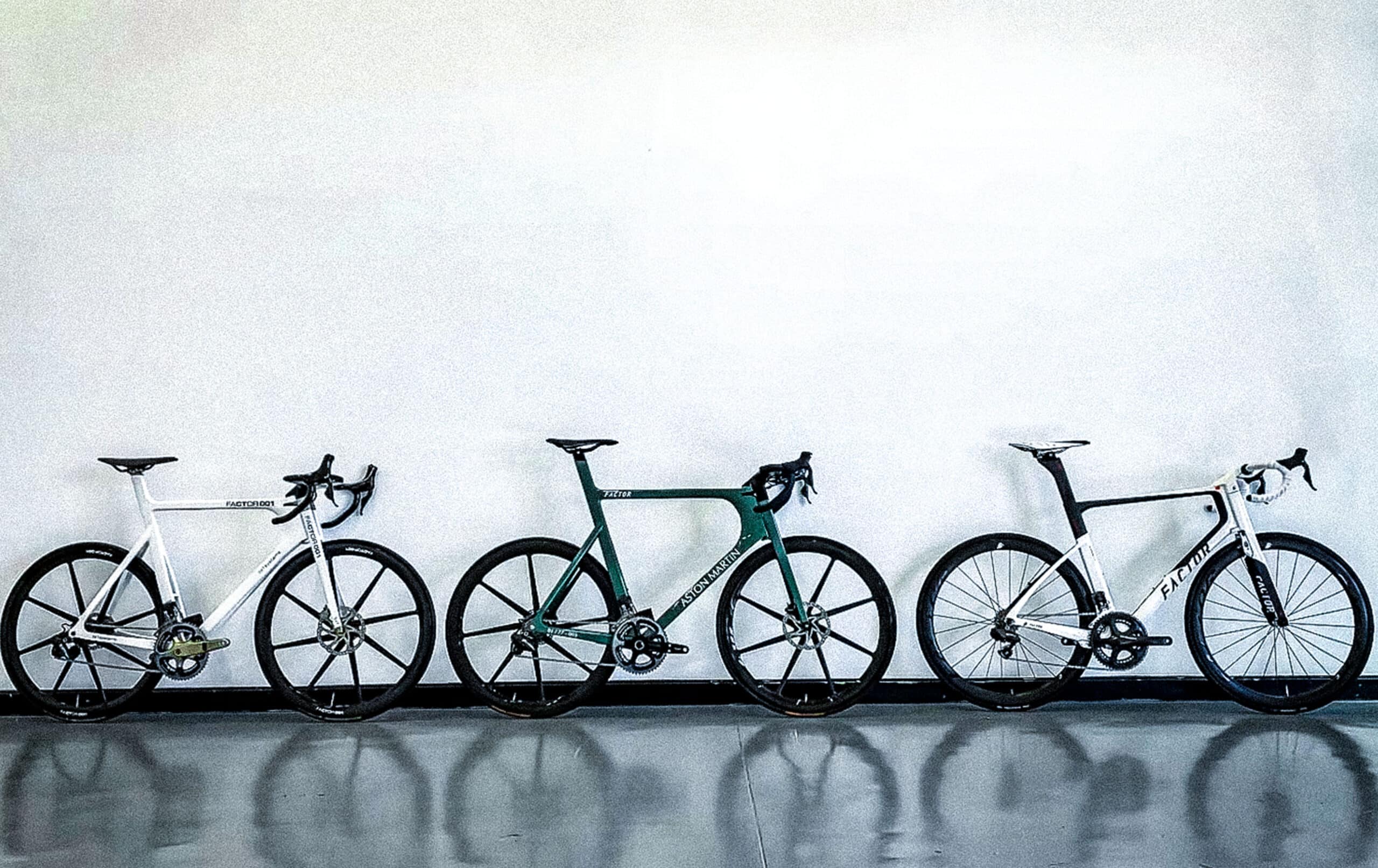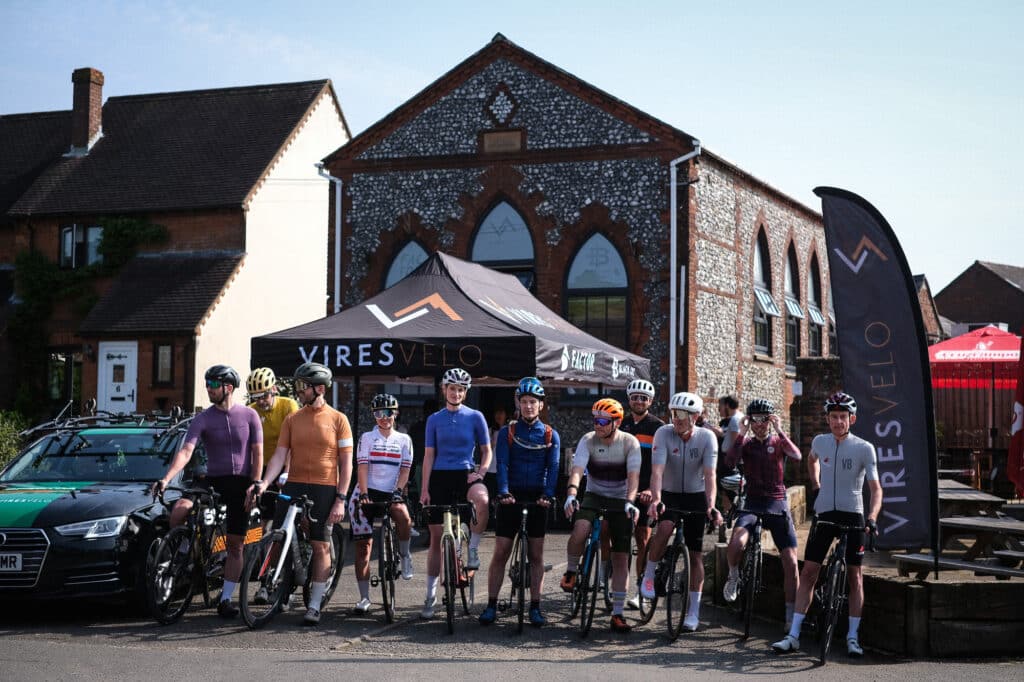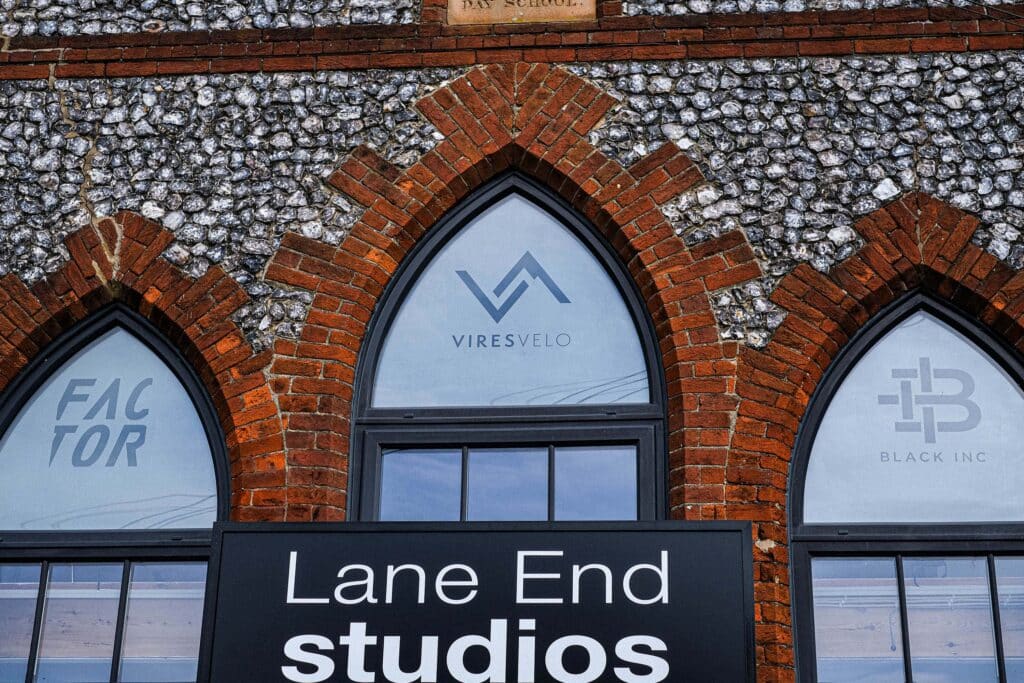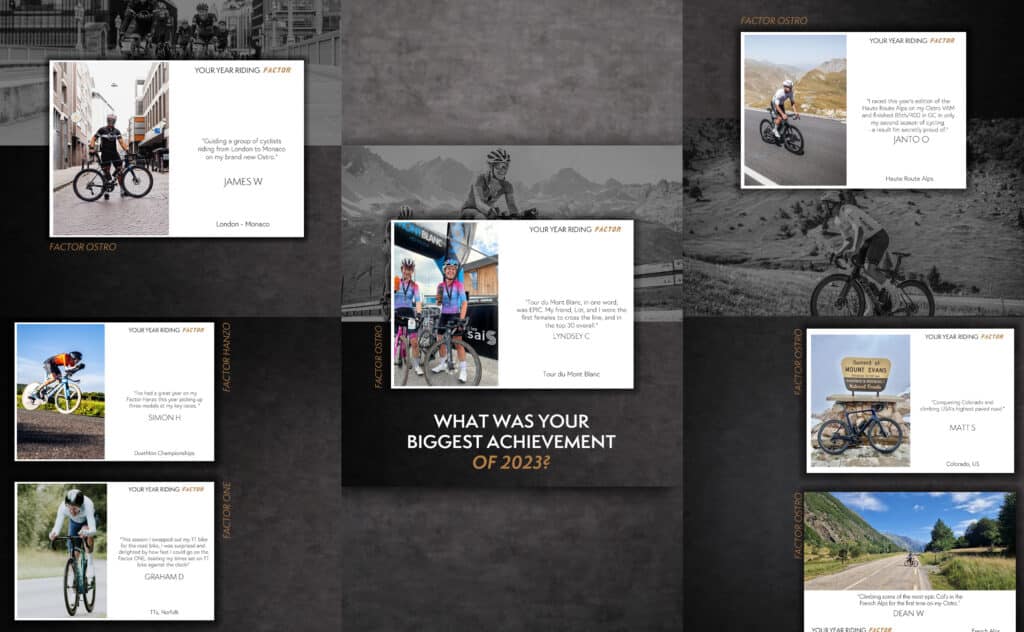The Factor Bikes Origin Story
From starting as a Formula One supplier’s side project to reaching the pinnacle of the cycling industry, the origin story of Factor is driven by a passion for innovation and engineering. In this long read, we delve into the opening chapter of the Factor story.
This article original appeared on the Factor website here:
You don’t need to be a fan to know that Formula One is the cutting edge. It’s the pinnacle of motorsport and a leader in technology, with a whole industry of advanced engineering firms supplying teams behind the scenes.
So, if you run one of those firms, and producing bespoke F1-level carbon fibre and electronics components is your bread and butter, what do you do to showcase your abilities? For John Bailey, then managing director of BF1 Systems and now MD of Vires Velo, the answer was the world’s most advanced bicycle.
In 2008, BF1 supplied all of the F1 teams and its specialty – F1’s famously complex steering wheels, with multi-function electronics built into a superlight and rigid carbon fibre structure – were in full view, but without any visible link to the company. What’s more, its aerospace work was so advanced that it remains secret now. “It all meant that our engineers rarely got the plaudits they deserved,” says John. “They were so committed and talented, but no one knew what they did. I decided it was time they had a new challenge, one that was very different to their usual work and one that would give them all a sense of ownership.”

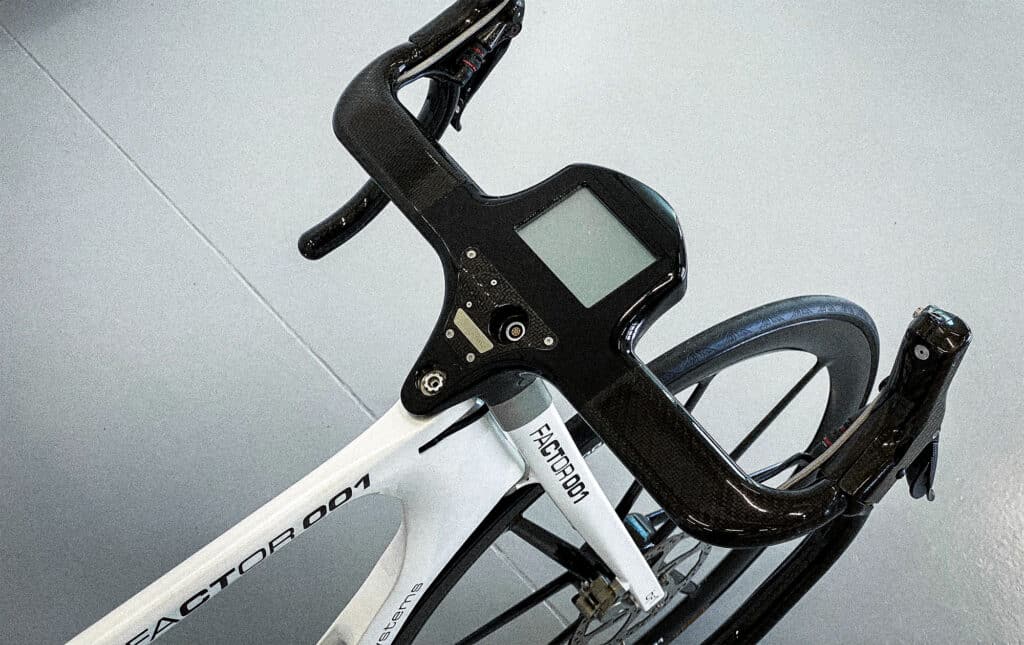
WHAT DO YOU BUILD, WHEN YOU CAN BUILD ANYTHING?
The choice to make the project a bicycle was a simple one. With so much in-house design and manufacturing capability in carbon fibre and electronics, and that strong connection to F1, John says “My first thought was for BF1 to do its own vehicle. Budgets prohibited one with an engine, so the clear choice was a bicycle.”
In F1, data acquisition and efficient packaging are fundamentals, so BF1 made them cornerstones of the bike project, now dubbed Factor 001. The more neatly an F1 car’s mechanicals and electronics are packaged, the more the shape can focus on aerodynamics. The 001 had to mirror that approach. “Aesthetics were an obsession,” says John. “It had to have fully internal cabling, zero clutter.”
The 001 would also be a data fiend. Live data, or telemetry, is hugely advanced in F1. Teams can track over 1000 data channels and receive some 2GB of data… every lap. It rather makes a mockery of professional cycling’s ongoing struggle to display basics such as rider heart rate and power in television coverage. The data tracking goal for the 001 was simple – everything.
The bike would monitor speed, climbing and lean angles, acceleration, the rider’s heart performance to medical standards, breathing rate, and especially power output. Strain gauges, the force measurement tool central to all power meters, were a core part of BF1’s products. The team set out to create a bicycle power meter fit for Formula 1.
LEARNING THE HARD WAY
“I looked at cycling and thought frame design was all so mainstream,” says John. “No one had done anything radical.” That was an open goal for an attention-grabbing, disruptive idea. John set about searching for inspiration.
“While trawling the internet one day, I stumbled across a study that included a computer-generated model of an optimal bike frame, created automatically based on FEA (Finite Element Analysis). It had twin downtubes and, although it was really ugly, it gave me an idea of how our bike might look.”
John tasked his engineers to run their own analysis of the concept, improve it, and make it look good at the same time. Six months later, they had a design. “It looked amazing, so we jumped in and made it,” says John, “but it rode badly. We were miles off.”
The team had bought in a Cervélo S3 to benchmark for performance. (At that time, the S3 was just one of the bikes being made in a factory owned by Rob Gitelis) John remembers testing it on the road around the factory: “It was awesome, and climbing had never been easier, but still I thought, ‘It’s a triangle made out of carbon fibre – how hard can it be?’
“There was a real complacency that bicycles would be easy, coming from F1. I don’t mind admitting that we made a massive mistake at the start of the 001 project. It wasn’t until the Vis Vires that we were able to iron out all the problems, make it ride really well, and prove that our Twin Vane downtube is an advantage.”
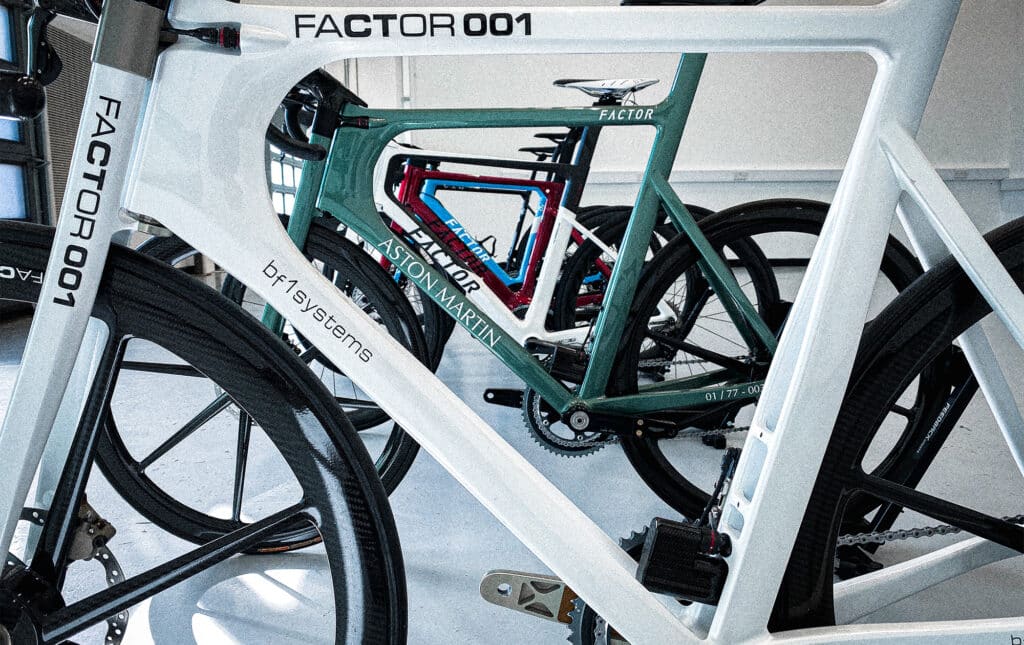
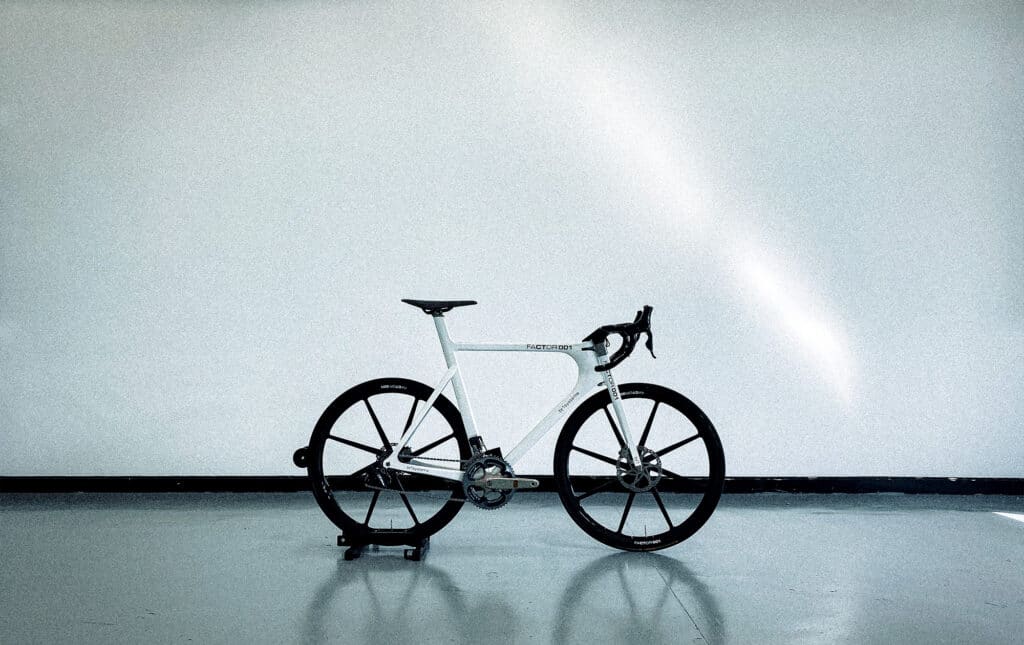
CHASE THE IMPOSSIBLE
Now aware of the scale of the engineering challenge ahead of them – and excited by it – John’s team dived in. Across the electronics and composites sides of the Factor 001, the project called on some 30 engineers at various points, as many as would work on a new F1 steering wheel.
The Twin Vane downtube proved to be especially complicated to mould. However, such were its advantages, both structural and aesthetic, that no consideration was ever given to abandoning it for a conventional design. The commitment of those engineers gave rise to what is now the signature feature of the Factor Bikes range.
Further hurdles came thick and fast, but problem solving is what drives F1 and its suppliers. “There are two different approaches you can take,” explains John. “Many will approach a problem from the bottom up, by trying to improve what currently exists. Alternatively, you go straight to the solution and ignore the difficulty and cost. First you solve the engineering problem, then you work out how to manufacture it. That was always the approach at BF1.
“The power meter was a good example. We weren’t impressed with what was on the market at the time. We wanted to measure at the cranks, with real accuracy in 3D (every direction of force), with high frequency reporting rather than once per second, while remaining light and very stiff. I had a very good stress engineer, Simon Roberts. I pushed him to deliver on every goal and he nailed it.”
The Factor power meter was picked up by British Cycling in the run up to the 2012 London Olympics. Its very high resolution data, accuracy and consistency enabled superior analysis of athletes’ performance. “We played a part in that gold medal haul and UK Sport thanked us. It’s nice to be able to say that,” says John.
Factor 001
INNOVATION FOR DAYS
“Getting the 001 finished was frustrating,” remembers John. “The bike was ready well before the electronics, which were a constant headache but ultimately the most interesting part of the bike for us.” So advanced was the power meter that no bike computer on the market could keep pace…so BF1 made their own head unit, too, because they could. It was just one of the innovations that made the Factor 001 so attention grabbing when it was revealed.
The rider biometrics stole lots of the headlines. In place of a simple heart rate monitor, the 001 kept its rider on a live, medical grade ECG (electro-cardiogram), as used for health exams. It could literally tell you if you were at risk of a heart attack.
What’s more, the 001 monitored your core body temperature, using a small sensor in a pill that you swallow before riding. “The philosophy was, if we can measure it, let’s include it,” says John. “It was a crazy amount of data, but a great halo project for BF1 and a very interesting challenge for our team.”
As the engineers blazed their own trail into the world of cycling, they were innovating without even knowing it. BF1 were the first to integrate hydraulic disc braking with Shimano Dura-Ace Di2 shifters. They’d had to make their own lever bodies to do it.”I have to say that Shimano were a great help during the 001 project. You have to remember that this was just as they were launching Di2 for the first time and we were bothering them with all sorts of questions while buying groupsets one at a time, yet they were really into it.”
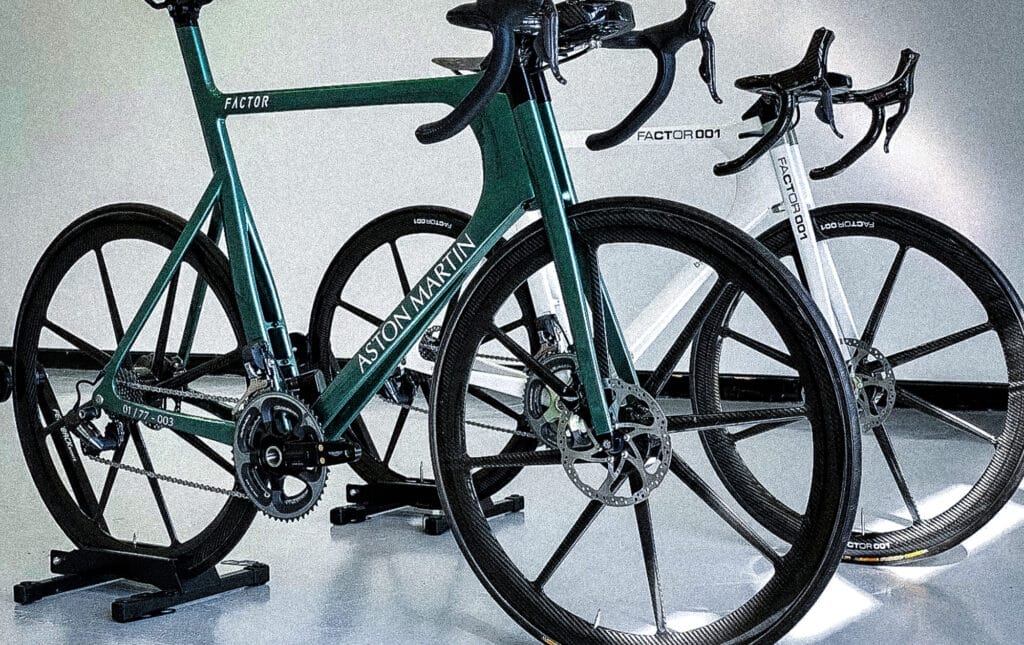
FROM 001 TO ONE-77
As a halo project for BF1 Systems, the Factor 001 was a great success. It garnered huge media attention, featured at the London Science Museum, and left jaws on floors around the cycling industry. It also prompted scores of conversations about its commercial viability.
“I had no intention of ever selling the 001 – that’s the irony of where we are now – but when we showed it, we realised that there was a small market for it, and particularly for the electronics,” says John. Instead of placing the 001 on a plinth in the lobby and returning their focus to F1, it left BF1 looking for the next step. They didn’t have to look far.
At that time, Aston Martin was a customer of BF1, commissioning the steering wheel and other electronics for their One-77, an ultra-exclusive £1.1m hypercar. The collaboration was a perfect fit and the 001 was evolved into the One-77 superbike with a new, improved cockpit and a finish by the legendary car brand’s own artisans. The bars and saddles were hand stitched in the same leather as used inside the cars, and the framesets were painted in the same hues as their bodywork. The result was stunning, and around a dozen were sold for £25k each. To anyone with a spare £1.1m for a car, that was probably pocket change.
While the One-77 bike was a success in its own right, its real significance was as the gateway for BF1 into the bike business. It was a matter of only a few weeks until a business proposition arrived that would hook them all the way in. Read about that in part two of this story.
In part two: The 001 morphs into a production reality, Factor Bikes is born and taken over by one of the giants of the cycling industry, and its future is set.
PART 2: “WE HAD UNFINISHED BUSINESS IN CYCLING”
The original Factor 001 had over-delivered as a halo project, creating pressure, expectation and temptation to find a way to put it into production. This is the story of how that was accomplished.
Factor Aston Martin ONE-77
The Factor 001 was a high-tech engineering showcase. With the creation of Factor Bikes, it was time for the original 001 to mature into a production bike that could be built in greater numbers and sold for less than five figures. Its creators, BF1 Systems, led by John Bailey, who is now MD of Vires Velo, were used to solving problems “the F1 way”, for which read ‘the expensive, difficult way’.
“At the start of the 001 project, I’d looked at cycling and thought that the UCI regulations really limited innovation,” says John. “If they opened up the regs, but kept a cost cap on framesets to satisfy the IOC (International Olympic Committee), the possibilities would be so interesting.
“Now that I’m part of the cycling industry, rather than F1, I can see the limits of development budgets and volume manufacturing, and I have to temper my engineering inclinations.” It’s the Factor story in microcosm.
UNFINISHED BUSINESS
The 001, and the Aston Martin One-77 superbike collaboration which followed, made a real impact in the cycling industry. Being on the flipside of John’s perspective, the cycling world admired, perhaps a little jealously, what was possible with F1 resources. There must have been conversations about whether it could be put into production in the HQs of dozens of bike brands.
Of all the industry figures whose heads had been turned, one veteran, recently turned consultant, was in a position to take action. He contacted BF1, presented a proposal to turn the 001 into a production bike, and made it stick.
“That’s how Factor Bikes began,” says John. “The accountant tried to talk me out of it, but I went into cycling because I wanted to, not because it was sensible.
“I felt like we had unfinished business in cycling. I wanted to make Factor a known brand. We had a bit of notoriety from the 001, and I also felt like we really had something to offer in terms of technology and design.”
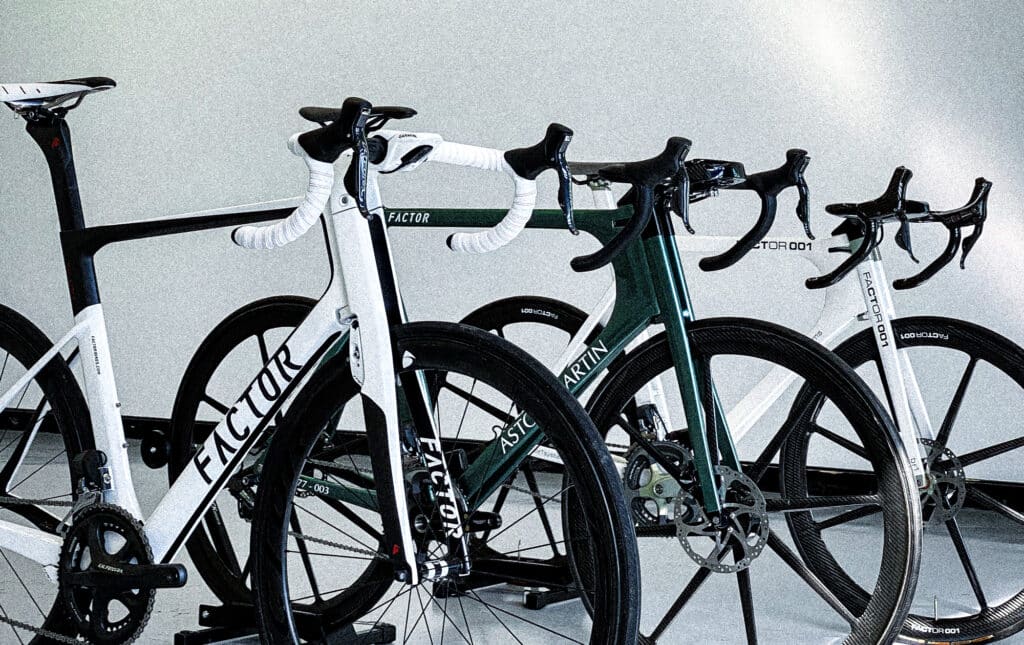
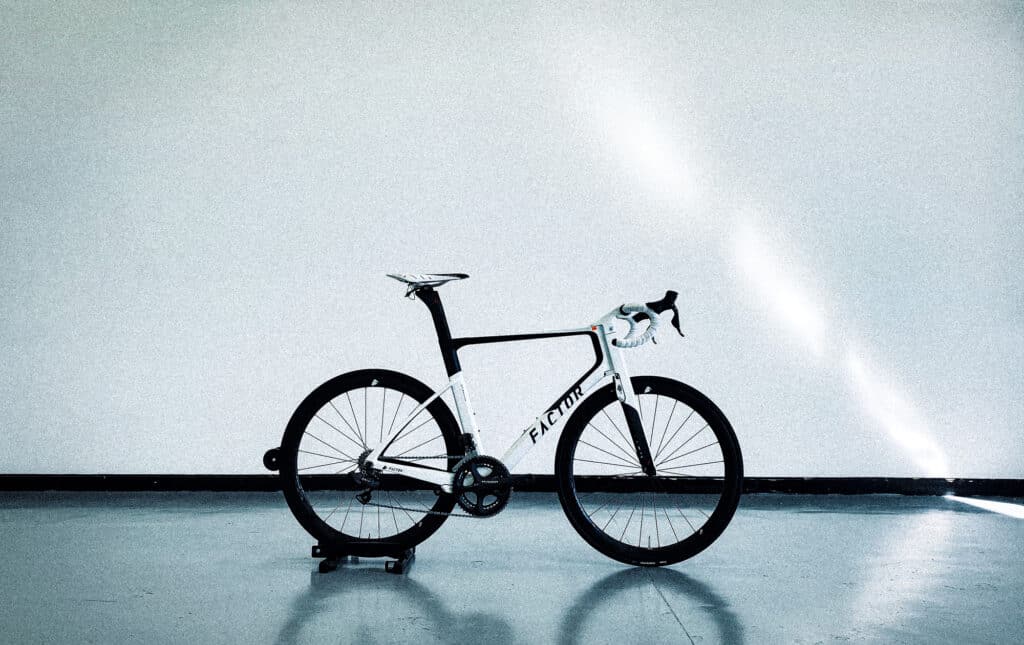
MAKING CONNECTIONS
A US-based agency was brought in to polish the design and John credits them with transforming the function-led output of F1 engineers into a commercial product. The bike evolved significantly and was named Vis Vires, Latin for ‘force, power’.
“The only part carried over from the 001 to the Vis Vires was the power meter crankset,” says John. “We went to rim brakes, which I regret, but there was no off-the-shelf road disc brake solution in 2012 and it would have cost a fortune to make our own. The cockpit solution was awkward, too, but we were trying to come up with a different approach to adjusting stack and reach while improving aerodynamics.”
Naturally, the BF1 engineers also used the opportunity to iterate and improve the bike’s performance. A great deal was learned about the potential of the Twin Vane downtube. Although it began as a structural optimisation, further testing revealed that Twin Vane created aerodynamics benefits around management of the wake from the front wheel. Seizing on these, the design was refined for both aero and stiffness.
“By evolving the tube shapes we greatly improved both the airflow and the torsional stiffness,” says John, “while also making it less of a nightmare to manufacture!”
When the finished Vis Vires was tested in a wind tunnel, it out-performed rivals from market leading brands. Factor Bikes were set to hit the ground running. Now all they needed was a factory. Enter Rob Gitelis.
Factor Vis Vires
AWARDS AND ACCOLADES
Securing the services of a respected factory as a very small, new brand is extremely difficult. It helps if you’re ordering 10,000 of something the factory is used to making. That was emphatically not the case for Factor Bikes, but Gitelis had come recommended. John remembers their first meeting:
“We went to him with the Vis Vires and said, ‘We’ve got this really complicated bike that we want to build. It’s horrible to manufacture and we probably only want 100 of them. How do you feel about it?’ And he said, ‘Yeah, I’ll do it.’ Straight away we liked him because he got the idea of the bike and wanted to be involved.”
The Vis Vires launched at the Eurobike trade show in August 2013 and was immediately recognised with a prestigious IF Gold Award for road bike design. It looked amazing and the package customers received was arguably great value even at £9999 for the top-spec model – it included the world’s most advanced power meter, Dura-Ace Di2, carbon fibre wheels, an ENVE handlebar, and came with a Garmin computer and Scicon bike bag.
Even more important than the industry award, when BikeRadar had an exclusive first ride a few weeks ahead of the launch, they loved the ride. “The Vis Vires impressed instantly with its very high stiffness… It handles like a thoroughbred racer [and] is a joy in the corners.”
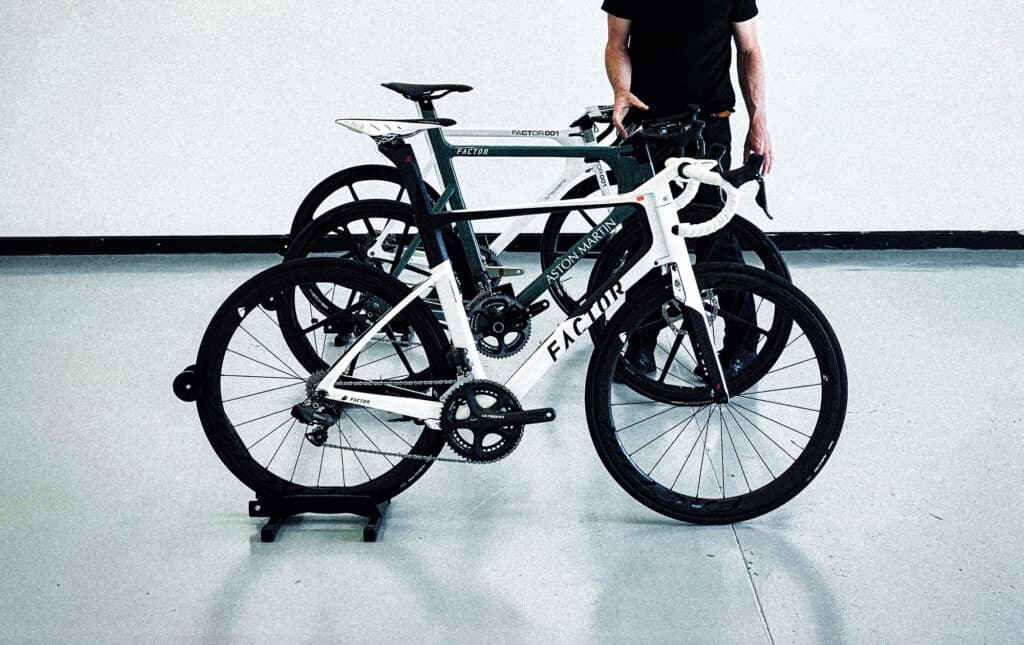
PASS THE TORCH
Sometimes you have to be careful what you wish for, and success can lead to a dead end. John Bailey was now the managing director of a bike brand as well as a very busy F1 engineering supplier.
“We made the first 100 bikes, and then I realised just what it was going to take to really build the brand, and I still had BF1 to run,” he says. “This is where the hindsight comes in, because I could have gone to Rob Gitelis at that point and suggested he buy into it, but I didn’t. It was a few months later that Rob and Baden Cooke came to me with their idea to take over Factor Bikes.”
Baden Cooke was just then retiring from a long career in professional cycling, highlights of which include the green jersey at the Tour de France. He was looking for his next career and investment, but naturally, he wanted to try the bike for himself first.
“Baden came to Norfolk to ride the Vis Vires and he loved it. The ride quality of the bike is what secured its future,” remembers John.
“Rob and Baden understood our project and were enthusiastic to take it forward. I would have canned the company rather than sell it to just anyone, but with Rob behind it I knew there was a good chance that I’d see Factor Bikes again in the future.”
Factor ONE
THE FINAL PHASE
Rob Gitelis took the remaining Vis Vires frames and designed a new, sleeker fork and cockpit that evolved and stayed faithful to the original concept; that became the super-fast Factor ONE aero road bike. The next step was to expand the range with a superlight bike for the mountains, and the first generation O2 was the perfect foil to the One.
“My attention went back to motorsport,” says John, “though I continued to follow cycling. One day in July 2017 I was casually watching the Tour de France, and there on my television was a Factor, being ridden by AG2R. It was an amazing moment.
“Factor Bikes had made it to the Tour de France, and I couldn’t have been happier.”
And Factor were just getting started…
Origins Timeline
Work starts on 001
Factor 001 concept revealed
First media test of Factor 001 & collaboration begins with Aston Martin
July; A-M One-77 launched to compliment £1m hypercar
August; Work begins to create the Factor Bikes brand
July; First media test of Factor Vis Vires
August; Vis Vires wins IF Gold award at Eurobike trade show
Rob Gitelis and Baden Cooke acquire Factor Bikes
